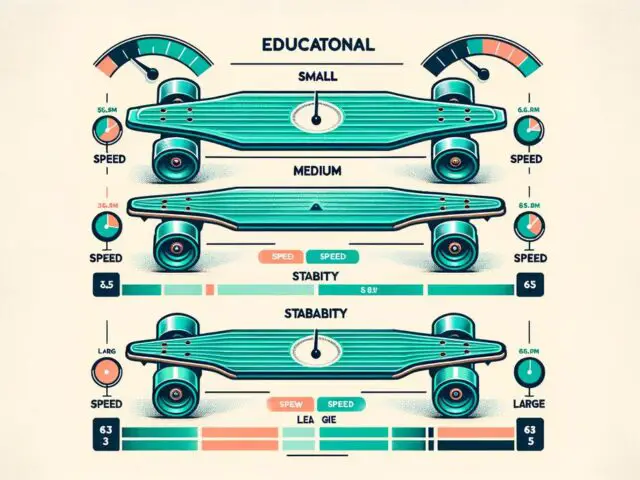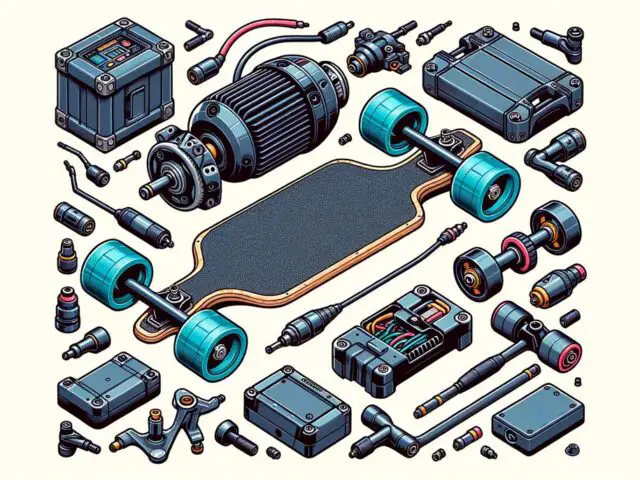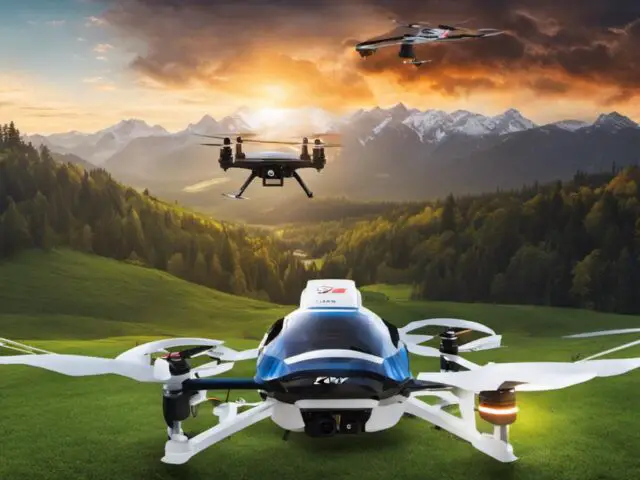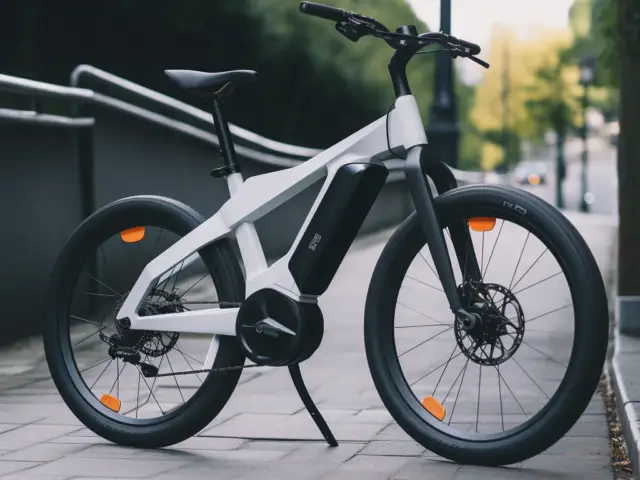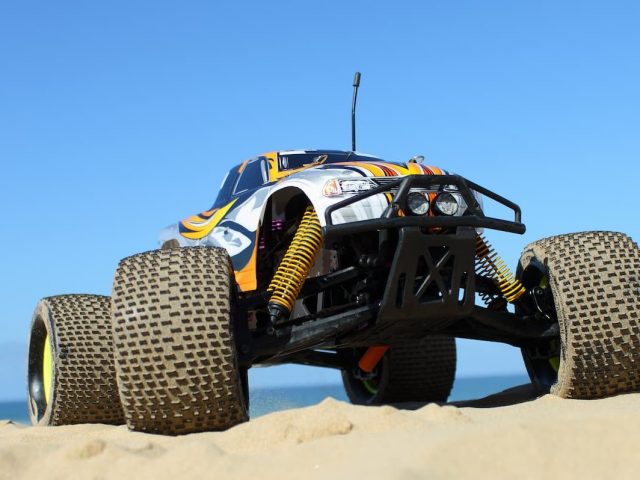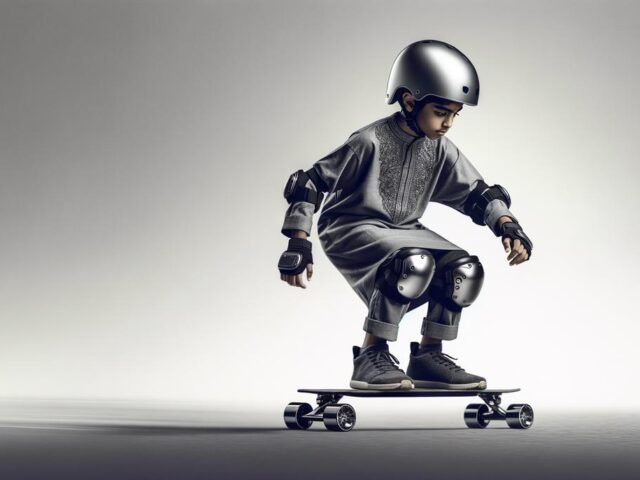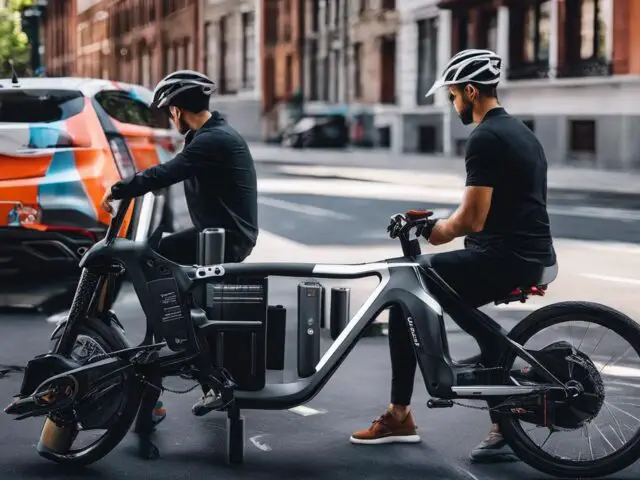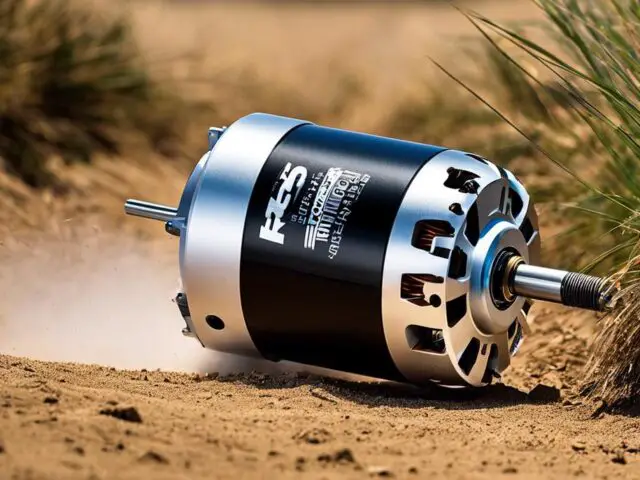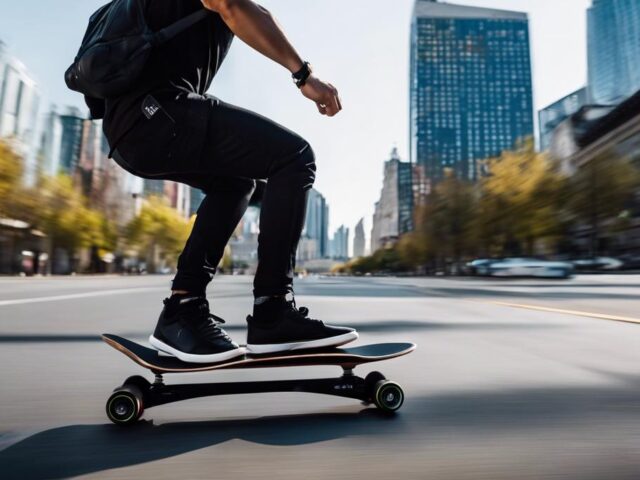Electric skateboards, with their promise of speed and convenience, have transformed the humble skateboard from a hallmark of youth culture into an exciting, high-tech mode of transportation. Empowered by advancements in technology, electric skateboards are gaining popularity among thrill-seekers and commuters alike. The digital revolution has taken skateboarding to the next level, introducing a comprehensive range of features from reliable batteries, powerful electric motors, to sophisticated control systems.
Whether you are a seasoned skateboarder seeking an upgrade or a newcomer stepping on the board for the first time, understanding the basics and mastering the performance features, interface controls, and maintenance requirements of electric skateboards have never been more critical. As we look to the future potential of this electrifying pastime, we will dive into everything you need to know about electric skateboards.
Table of Contents
Basics of Electric Skateboards
The Tech Beneath Your Feet: A Look at Electric Skateboard Technology
Electric skateboards are revolutionizing the personal transportation scene, achieving a beautiful blend of technology and traditional skateboarding. They combine cutting-edge technology with a timeless design to aid urban mobility and deliver an adrenaline-rush experience. But have you ever wondered about the magic that powers these small modern marvels? Jump in, as we dive into the fundamental technology behind electric skateboards.
What Is A Hub Motor Electric Skateboard?
Hub motor electric skateboards, often referred to as “hub motor e-boards,” are a type of electric skateboard in which the electric motors are integrated into the wheels (typically the rear wheels). These motors are compact and sit inside the skateboard’s wheel hubs. Hub motor electric skateboards have gained popularity due to their streamlined design and ease of use. Here are some key characteristics and advantages of hub motor electric skateboards:
- Sleek and Minimalist Design: Hub motors are built directly into the skateboard’s wheels, resulting in a clean and minimalist appearance. There are no external belts, pulleys, or gears.
- Lightweight and Portable: Hub motor e-boards tend to be lightweight and portable because they have fewer components than belt-driven systems. This makes them easy to carry when not riding.
- Simplicity and Low Maintenance: Hub motor systems have fewer moving parts, which means less maintenance is required. There are no belts to replace or pulleys to adjust.
- Regenerative Braking: Many hub motor electric skateboards offer regenerative braking, which helps recharge the battery when slowing down or descending hills. This feature can extend the board’s range.
- Quieter Operation: Hub motor e-boards are quieter than belt-driven systems because there are no belts slapping against pulleys. This makes them more suitable for urban environments.
- Standalone Operation: Hub motor e-boards can be pushed and ridden like regular skateboards even when the motor is not engaged or when the battery is depleted.
- Rider-Friendly: Hub motor electric skateboards are often preferred by beginners because they are user-friendly and straightforward to operate. Riders can focus on balance and control without worrying about belt tension or gear ratios.
- Availability: Hub motor electric skateboards are widely available from various manufacturers, offering a range of options in terms of performance, range, and price.
However, there are some limitations to hub motor electric skateboards:
- Power and Torque: While hub motor systems are suitable for casual riding and commuting, they may have limitations when it comes to high torque and steep hill climbing compared to belt-driven systems.
- Heat Buildup: Hub motors are enclosed within the wheel hubs, which can lead to heat buildup during prolonged or aggressive riding. Some boards may have heat management systems to address this.
- Customization: Hub motor systems are less customizable in terms of adjusting gear ratios or upgrading motor power because the motors are integrated into the wheels.
What Is A Belt Driven Electric Skateboard?
Belt-driven electric skateboards are a type of electric skateboard that use a belt and pulley system to transfer power from the motor to the skateboard’s wheels. Unlike hub motor electric skateboards, where the motor is integrated into the wheels, belt-driven electric skateboards have the motor mounted on the underside of the deck and connected to the wheel’s pulley system via one or more belts.
Here are some key characteristics and advantages of belt-driven electric skateboards:
- Power and Torque: Belt-driven systems are known for their ability to deliver more power and torque compared to hub motor systems. This means they can handle steeper inclines and offer better acceleration, making them suitable for off-road or all-terrain riding.
- Customization: Belt-driven electric skateboards often allow for customization of gear ratios by changing the size of the pulleys, which can affect speed and torque. This flexibility allows riders to fine-tune their board’s performance to suit their preferences.
- Replaceable Parts: Belts and pulleys are replaceable components, which makes maintenance and repairs relatively straightforward. If a belt wears out or breaks, it can be replaced without having to replace the entire motor system.
- Smooth Ride: Belt-driven systems often provide a smoother and more comfortable ride because they can absorb shocks and vibrations better than hub motors. This is especially valuable for riding on rough terrain.
- Braking Performance: Belt-driven electric skateboards typically offer regenerative braking, which can help recharge the battery and improve overall efficiency. The ability to modulate braking power also provides better control.
- Higher Top Speeds: Due to their gearing system, belt-driven electric skateboards can achieve higher top speeds compared to some hub motor boards.
- Off-Roading Capability: Some belt-driven electric skateboards are designed for off-road use, featuring larger wheels with pneumatic tires that provide better traction and handling on uneven surfaces.
- Loudness: Belt-driven systems tend to be noisier than hub motors because of the sound generated by the belt and pulley mechanism.
It’s important to note that belt-driven electric skateboards may require more maintenance than hub motor boards due to the wear and tear on belts and pulleys. Riders should periodically check and replace these components to ensure optimal performance.
Get Juiced: The Batteries That Fuel Our Motion
An electric skateboard lithium-ion battery is a rechargeable energy storage component that powers an electric skateboard. These batteries use lithium-ion technology, which is widely recognized for its high energy density, long cycle life, and reliability. Here are some key characteristics and details about electric skateboard lithium-ion batteries:
1. Lithium-Ion Chemistry:
- Electric skateboard batteries typically use lithium-ion (Li-ion) chemistry due to its energy efficiency and performance characteristics. Li-ion batteries are known for their ability to store a significant amount of energy in a compact and lightweight package.
2. Voltage and Capacity:
- Electric skateboard batteries typically operate at voltages between 36V and 48V, depending on the specific board and motor configuration. The capacity of these batteries is measured in ampere-hours (Ah) or milliampere-hours (mAh) and determines how far the skateboard can travel on a single charge.
3. Battery Pack Configuration:
- Electric skateboard batteries consist of multiple individual lithium-ion cells connected in series and/or parallel to achieve the desired voltage and capacity. Common configurations include 10S (10 cells in series) and 12S (12 cells in series).
4. Range and Performance:
- The battery’s capacity, along with the skateboard’s motor and electronics, determines the board’s range and performance. Larger capacity batteries generally offer longer ranges, while more powerful motors provide better acceleration and speed.
5. Charging:
- Electric skateboard lithium-ion batteries are rechargeable. Users can charge them using a compatible charger and a standard electrical outlet. Charging times vary depending on the battery’s capacity and the charger’s output.
6. Battery Management System (BMS):
- Many electric skateboards incorporate a Battery Management System (BMS) to monitor and manage the individual cells within the battery pack. The BMS helps maintain balanced cell voltages, prevents overcharging, and enhances the safety and longevity of the battery.
7. Weight and Form Factor:
- Electric skateboard batteries are designed to be compact and lightweight to fit within the skateboard deck’s enclosure or housing. They are usually secured to the skateboard’s underside.
8. Lifespan and Durability:
- The lifespan of a lithium-ion battery is influenced by factors such as charge-discharge cycles, temperature, and usage patterns. With proper care and maintenance, these batteries can last several years before needing replacement.
9. Safety Considerations:
- Lithium-ion batteries are generally safe when handled and maintained correctly. However, improper charging, physical damage, or exposure to extreme conditions can pose safety risks, such as overheating or fires. It’s important to follow manufacturer guidelines for safe use and charging.
10. Replacement: – Over time, the battery’s capacity may degrade, reducing the skateboard’s range. In such cases, users can often replace the battery pack with a new one, provided the skateboard’s design allows for battery replacement.
Electric skateboard lithium-ion batteries play a vital role in providing the power needed for electric skateboards to operate efficiently and provide an enjoyable riding experience.
Electronic Speed Controllers: The Brains Behind The Operation
An electric skateboard ESC, or Electronic Speed Controller, is a crucial component that controls the speed, direction, and braking of an electric skateboard. It acts as the interface between the rider’s input (usually from a handheld remote control) and the skateboard’s electric motor. Here’s a closer look at what an electric skateboard ESC is and how it functions:
1. Speed Control:
- The primary function of an ESC is to control the speed of the electric skateboard. It interprets signals from the rider’s input device (typically a remote control) and adjusts the power delivered to the motor accordingly. This allows the rider to accelerate and decelerate smoothly.
2. Direction Control:
- ESCs are responsible for managing the direction of the electric skateboard. In most setups, the ESC can reverse the polarity of the electric motor, allowing the skateboard to move backward when the rider reverses the throttle on the remote control.
3. Braking:
- ESCs also enable regenerative braking, a feature commonly found in electric skateboards. When the rider applies the brakes, the ESC adjusts the motor’s power to slow down the skateboard and, in some cases, recharge the battery by converting kinetic energy back into electrical energy.
4. User Interface:
- ESCs often have a user interface component, which can include LED lights, status indicators, and sometimes even Bluetooth connectivity for smartphone apps. These features allow riders to monitor battery status, adjust settings, and receive diagnostic information.
5. Safety Features:
- Many electric skateboard ESCs come equipped with safety features, such as overheating protection, current limiting, and voltage cutoffs to prevent damage to the motor or battery and ensure rider safety.
6. Compatibility:
- ESCs are designed to work with specific electric skateboard systems, including the motor, battery, and remote control. Compatibility between these components is crucial for smooth and safe operation.
7. Customization:
- Some electric skateboard ESCs offer customization options, allowing riders to fine-tune parameters like acceleration, braking strength, and top speed to match their preferences and riding style.
8. Firmware Updates:
- Manufacturers may release firmware updates for ESCs to improve performance, add new features, or address any issues. It’s essential to keep the ESC firmware up-to-date to maintain optimal performance.
9. Remote Control Connection:
- The ESC communicates wirelessly with the remote control, typically using radio frequency (RF) technology or Bluetooth. This connection enables real-time control and feedback between the rider and the skateboard.
Electric skateboard ESCs are a critical component in ensuring a smooth and safe riding experience. They play a key role in translating the rider’s commands into motor control and providing features like acceleration, braking, and direction control.
Wireless technology is another key player in the electric skateboard world. High-end electric skateboards use a handheld wireless remote that connects to the ESC using either Bluetooth or Radio Frequency. With options to control your speed, brake, and even reverse, the wireless remote enables you to have full control of your ride without having to dismount.
Regenerative Braking: Recharging On The Go
Regenerative braking, often referred to as “regen braking,” is a feature commonly found in electric skateboards and other electric vehicles. It is a mechanism that allows the electric skateboard to recover and convert some of the kinetic energy generated during braking or coasting into electrical energy, which is then stored in the skateboard’s battery. Here’s how regenerative braking works and its benefits:
How Regenerative Braking Works:
- Braking or Coasting: When the rider applies the brakes or simply allows the skateboard to coast without accelerating, the electric skateboard’s motor operates in reverse mode. Instead of drawing power from the battery to propel the skateboard forward, the motor acts as a generator.
- Generation of Electricity: As the motor spins in reverse, it generates electricity. This is accomplished by converting some of the skateboard’s kinetic energy (motion) into electrical energy (electricity). This electrical energy is in the form of direct current (DC).
- Conversion and Storage: The electrical energy generated by the motor during regenerative braking is converted to a voltage suitable for charging the skateboard’s battery. It is then sent to the battery for storage.
- Battery Recharging: The stored electrical energy is used to recharge the battery. This process increases the battery’s state of charge (SoC), effectively “topping off” the battery and extending its overall range.
Benefits of Regenerative Braking:
- Extended Range: One of the primary benefits of regenerative braking is that it increases the electric skateboard’s overall range. By recapturing some of the energy that would otherwise be lost as heat during braking or coasting, regen braking allows riders to travel farther on a single charge.
- Enhanced Efficiency: Regenerative braking improves the skateboard’s energy efficiency. It maximizes the use of the stored energy in the battery and reduces the need for frequent recharging.
- Reduced Brake Wear: Since regen braking relies on the motor for braking force, it can reduce the wear and tear on physical brake components (e.g., brake pads), potentially extending their lifespan.
- Smoother Braking: Regenerative braking can provide smoother and more controlled braking compared to traditional friction-based braking systems. This can enhance the rider’s control and safety.
- Eco-Friendly: By converting kinetic energy into electrical energy, regen braking reduces energy waste and contributes to a more environmentally friendly and sustainable mode of transportation.
It’s important to note that the effectiveness of regenerative braking can vary depending on factors like the skateboard’s design, motor power, battery capacity, and riding conditions. Not all electric skateboards have regenerative braking, so it’s a feature to look for if you value the benefits it offers.
Far from being a simple grouping of wheels, deck, and rider, electric skateboards represent the best of a quickly advancing electric mobility tech, augmenting every riding experience. Future developments in this arena could lead to even better battery capabilities or more efficient motors, further enhancing the thrill of this interactive and intuitive mode of transport. The fundamental technology behind electric skateboards fuses efficiency, sustainability, and excitement into one beneficial package.

Photo by marckleen on Unsplash
Detailed Review of Performance Features
Electric skateboards come in a wide range of models, each with its own set of performance features and characteristics. Below is a detailed review of the key performance features to consider when evaluating an electric skateboard:
- Motor Power and Type:
- Motor power is a critical factor in an electric skateboard’s performance. It’s usually measured in watts (W) or kilowatts (kW). Higher wattage motors provide more acceleration, torque, and top speed. There are two main types of electric skateboard motors: hub motors (integrated into the wheel hubs) and belt-driven motors (located underneath the deck). Hub motors are known for their simplicity and quiet operation, while belt-driven motors offer more customization options and typically deliver more power.
- Top Speed:
- The top speed of an electric skateboard is an essential performance metric. It determines how fast the board can travel on flat terrain. Top speeds can vary widely, with some boards capable of reaching 20 mph (32 km/h) or more. Consider your comfort level and local speed regulations when choosing a top speed that suits your needs.
- Acceleration and Torque:
- Acceleration and torque are influenced by the motor’s power and type. High-torque motors provide strong acceleration, making it easier to tackle hills and start from a standstill. Consider the terrain in your area and how quickly you want the skateboard to accelerate.
- Range (Battery Life):
- The range of an electric skateboard refers to how far it can travel on a single charge. It depends on the battery’s capacity (measured in ampere-hours or watt-hours) and the skateboard’s efficiency. A larger capacity battery generally provides a longer range. Keep in mind that factors like rider weight, terrain, and riding style can affect the actual range.
- Hill Climbing Ability:
- Electric skateboards vary in their ability to climb hills. Look for models with strong motors and good torque if you plan to ride on steep inclines regularly. Some electric skateboards are specifically designed for off-road or all-terrain use and have enhanced hill-climbing capabilities.
- Braking System:
- Braking is a crucial safety feature. Electric skateboards typically use electronic regenerative braking, which converts kinetic energy into electrical energy to slow down the board. Some models may also have additional mechanical brakes, such as disc brakes or foot-activated brakes. Look for smooth and responsive braking to ensure rider safety.
- Ride Modes and Customization:
- Many electric skateboards offer multiple ride modes that allow riders to adjust settings like acceleration, braking strength, and top speed to match their skill level and preferences. Customizable ride modes provide a more tailored riding experience.
- Deck and Wheel Size:
- The deck size and wheel diameter can influence the stability and comfort of your ride. Larger wheels provide better shock absorption and can handle rough terrain more effectively. Consider the deck shape and material for comfort and stability.
- Weight Capacity:
- The weight capacity of an electric skateboard is essential to ensure safe and efficient operation. Make sure the board can support your weight along with any additional gear you may carry.
- Remote Control:
- The remote control is the interface between the rider and the skateboard. Look for ergonomic and intuitive remotes with clear displays and responsive controls for a comfortable and safe riding experience.
- Smart Features:
- Some electric skateboards come with smart features like smartphone app connectivity, GPS tracking, and firmware updates. These features can enhance the overall riding experience and provide useful data and information.
- Terrain Compatibility:
- Consider where you plan to ride your electric skateboard. Some models are designed for smooth urban terrain, while others are built for off-road adventures. Choose a board that matches your intended riding environment.
- Durability and Build Quality:
- Assess the build quality and durability of the skateboard, including the deck, trucks, wheels, and overall construction. High-quality materials and construction can prolong the lifespan of your board.
- Weight and Portability:
- Weight and portability are important if you need to carry your electric skateboard when not riding. Lighter boards are easier to transport and carry.
- Warranty and Customer Support:
- Check the manufacturer’s warranty and the availability of customer support. A reliable warranty can provide peace of mind in case of defects or issues.
Performance features are crucial to consider when choosing an electric skateboard, as they directly impact your riding experience. It’s essential to match the skateboard’s performance characteristics to your skill level, riding style, and intended use to ensure a satisfying and safe riding experience.

User Interface and Control Mechanisms
Now, let’s delve into the mechanisms at play behind electric skateboard controls and how they influence user experience.
First and foremost, control systems in electric skateboards involve the essential pair-up of a hand-held wireless remote and an on-board receiver. These remotes typically come with a throttle to control speed – either through a wheel, a slider, or buttons. Some versions even have two-way communication, feeding back information such as battery status, speed, and range to the rider.
One of the most fascinating developments, however, lies in the implementation of weight-sensor controls like the OneWheel offers. These systems aim to render handheld remotes redundant by intuitively registering the rider’s shifts in body weight. Lean forward, and the acceleration kicks in; rock back, and you kick into a smoother glide or brake. It’s like having Mother Nature as your cruise control.
Imagine the sheer spontaneity of riding and the increased efficiency of not having to rely on pushing a throttle! While this technology is still being refined and isn’t quite as sensitive or smart as one might hope, advancements are becoming more promising, heralding a whole new level of intuitiveness in electric skateboarding.
Likewise, the concept of control isn’t limited merely to motion. The introduction and development of smartphone apps offer an added layer of controllability and customization. The rider can tweak settings, adjust board sensitivity, control lighting, lock their board, track rides, and even update firmware – all at their fingertips.
Moreover, the emergence of machine learning technologies is rewriting the rulebook for electric skateboard controls. Powerful algorithms can learn from user behaviors, automatically optimizing the board’s performance for the person riding, including speed, acceleration, and braking. They can even make predictive adjustments, providing a riding experience that is increasingly personalized, safe, and efficient.
Keep in mind that as exciting and innovating as these control mechanisms may seem, each comes with its pros and cons, impacting the user experience. Handheld remotes offer precision and reliability, but they can be inconvenient and, in some instances, lead to distractions. Weight sensor controls provide a more natural riding experience but can potentially limit rider control, particularly in unexpected situations.
Apps offer customization but rely heavily on the user’s smartphone, making them a not-so-great option for those reluctant to mount their $1,000 phone to a fast-moving board. Machine learning based controls advance customization and safety but are still in their infancy, requiring further development and thorough testing for reliability and security.
Ultimately, the ideal control type will hinge on the rider’s unique preferences and comfort level. Whether it’s the conventional handheld remote or the high-tech weight sensor controls, the choice remains yours. Tune in for the latest technology developments in this sphere, and experience the joy of skating on your terms!

Maintenance and Troubleshooting
Maintaining an electric skateboard is essential to ensure it remains safe and performs optimally. Here’s a step-by-step guide on how to maintain your electric skateboard:
- Safety First:
- Always wear appropriate safety gear, including a helmet, knee and elbow pads, gloves, and closed-toe shoes when working on your electric skateboard.
- Cleaning:
- After each ride, wipe down the deck and components with a dry cloth to remove dirt and debris.
- Use a damp cloth or mild cleaning solution to remove stubborn stains or dirt.
- Avoid using a high-pressure hose or submerging the skateboard in water as this can damage electronic components.
- Check the Wheels:
- Regularly inspect the skateboard wheels for wear and tear. If they are unevenly worn or have chunks missing, it’s time to replace them.
- Rotate the wheels periodically to ensure even wear.
- Tighten Hardware:
- Check all screws, nuts, and bolts on your skateboard, including those on the trucks and deck. Vibration can cause them to loosen over time.
- Use the appropriate tools to tighten any loose hardware.
- Inspect Bearings:
- Remove the wheels to access the bearings.
- Clean the bearings using a bearing cleaner or a solvent like isopropyl alcohol.
- Lubricate the bearings with skateboard-specific bearing lubricant.
- Reassemble the wheels, ensuring everything is properly seated.
- Trucks Maintenance:
- Check the trucks for any damage or excessive wear.
- Adjust the tightness of the trucks to your preferred riding style.
- Ensure that the kingpin nut is appropriately tightened.
- Battery Care:
- Charge the battery regularly, even if you’re not riding. Lithium-ion batteries should be stored between 20% and 80% charge for optimal lifespan.
- Avoid overcharging the battery or letting it completely drain.
- Store your electric skateboard in a cool, dry place away from extreme temperatures.
- Motor and Electronics:
- Inspect the motor for any debris or foreign objects that may have become lodged in it.
- Check all wires and connectors for damage or loose connections. Secure any loose connections.
- Keep the electronic components dry and protected from moisture.
- Remote Control:
- Ensure the batteries in your remote control are fresh.
- Test the remote’s functionality regularly to ensure it can control the skateboard effectively.
- Software Updates:
- If your electric skateboard has a mobile app or firmware updates, keep them up to date for optimal performance and safety features.
- Deck Inspection:
- Regularly check the deck for any signs of damage or wear, such as cracks or fractures. Replace the deck if necessary.
- Professional Maintenance:
- If you are unsure about any maintenance task or notice significant issues, consult the manufacturer’s customer support or take your skateboard to a professional for inspection and maintenance.
- Learn About Your Skateboard:
- Familiarize yourself with the specific maintenance requirements outlined in the manufacturer’s manual or documentation that came with your electric skateboard.
Regular maintenance not only extends the life of your electric skateboard but also ensures your safety while riding. By following these steps and staying vigilant, you can enjoy your electric skateboard for years to come.

The Future of Electric Skateboards
Pivoting towards the future, there are several promising developments on the tech horizon set to change the game for electric skateboards. Driven by a constant push for improvement, this sector continues to see rapid advancements as it strides into tomorrow.
Swarm Intelligence is one such tech marvel that’s starting to garner attention. A smart implementation of collective intelligence, enhanced by machine-learned decision-making capabilities could empower electric skateboards to operate and react intelligently to variations in environment and rider behavior.
In fact, integrating Artificial Intelligence (AI) with electric skateboards is not a far-fetched theory. The introduction of AI can drastically improve ride safety by performing real-time calculations and advanced diagnostics to prevent potential accidents, proactively adapting the skateboard’s operations for optimum performance.
The power of Machine Learning (ML) shouldn’t be neglected too. That’s where tools like predictive maintenance come into play, ensuring that skateboards remain in peak condition by predicting potential issues before they occur. This could range from smart battery management forecasting recharge intervals and extending battery life, to diagnosing performance imbalances and addressing them in real-time.
Biometric technology is another advancement to watch out for. Imagine a future where, similar to smartphone lock screens, your electric skateboard unlocks only with your fingerprints or through facial recognition. Not only would this enhance security but also create a more personalized connection between the rider and his skateboard.
Moreover, Virtual Reality (VR) and Augmented Reality (AR) have a huge potential to revolutionize the training and learning process in electric skateboarding. Pairing AR/VR with the skateboard could pave the way for creating immersive and safe training environments, helping beginners master the art of electric skateboarding without any risk of injuries.
Ever thought about voice-command electric skateboards? It may seem straight out of a science fiction movie, but with the rapid advancements of personal assistants like Amazon’s Alexa, Google Assistant, and Apple’s Siri, “talking” to your skateboard might be closer than we think.
Last but not least, the development of smart cities could directly impact the evolution of electric skateboards. With connected infrastructures, smart traffic management systems, and advanced navigation, future e-skateboards could be designed to integrate perfectly with these adaptive city landscapes.
The journey of technology and its application is only limited by imagination. As the journey of electric skateboards continues to flash forward at incredible speed, there’s little doubt that the ride will be anything but extraordinary.

From basement inventors to skateboarding enthusiasts, electric skateboards continue on their trajectory of growth and development. Combining mobility with entertainment, electric skateboards promise to become richer and more complex as technological advancements usher in smarter safety features, superior battery lives, and the advent of autonomous boards. By enhancing our understanding of electric skateboards from their rudimentary beginnings to promising future, we position ourselves to make the most of this thrilling ride. Through understanding the technology that makes up these devices, the features and user interface which dictate their use, and key maintenance and troubleshooting techniques, we become informed and responsible riders and consumers.
Helpful Links
For all your RC Questions, Click HERE
If you are interested in RC cars and trucks, RC World has you covered.
For RC boats and watercraft, check these articles out.
For all your RC Airborne endeavors, we have everything you need.
Maximize E-Skateboard Speed: Wheel Size Guide
Electric skateboards are transforming how we move through urban landscapes, combining leisure and utility in an eco-friendly package. The heart of an electric skateboard’s performance lies in its…
Build an Electric Skateboard: Step-by-Step
Building your own electric skateboard is an exciting process that brings together the thrill of skating with the satisfaction of creating something with your hands. This guide will…
Top FPV Drone Simulators: A Comprehensive Guide
As drone technology continues to evolve and open up new possibilities for leisure, sporting, and professional use, the demand for skilled drone pilots is increasing. However, mastering the…
Revolutionizing E-Bikes with Wireless Charging Technology
As technology continues to advance, we are constantly finding new ways to make our lives easier and more efficient. One area that has seen significant progress is the…
Pushing Your Nitro RC Car Performance to the Moon
The sound of a nitro engine revving up is one of the most satisfying sounds for us nitro racers. I’m sure you know by now that you can…
Safe Electric Skateboard Rides for Kids
Choosing the right electric skateboard for your child involves more than just picking out a cool design. It’s about finding a balance between fun and safety, ensuring that…
Ultimate Guide to E-Bike Charging Stations
Electric bikes, commonly known as e-bikes, are revolutionizing urban travel, offering riders a sustainable and efficient mode of transport. At the heart of every e-bike is its battery,…
9 Best Motor Powers for Off-Road Electric Skateboards
Embarking on an exhilarating journey through untamed landscapes requires not just courage but also the right equipment. Off-road electric skateboarding is a pursuit where the synergy between man…
Top Electric Skateboards for a Seamless Ride: Find Your Perfect Match
Electric skateboarding is swiftly cementing its status as not just a thrilling recreational pastime, but also as a viable mode of urban transportation. The thrill-seekers and eco-conscious commuters…

